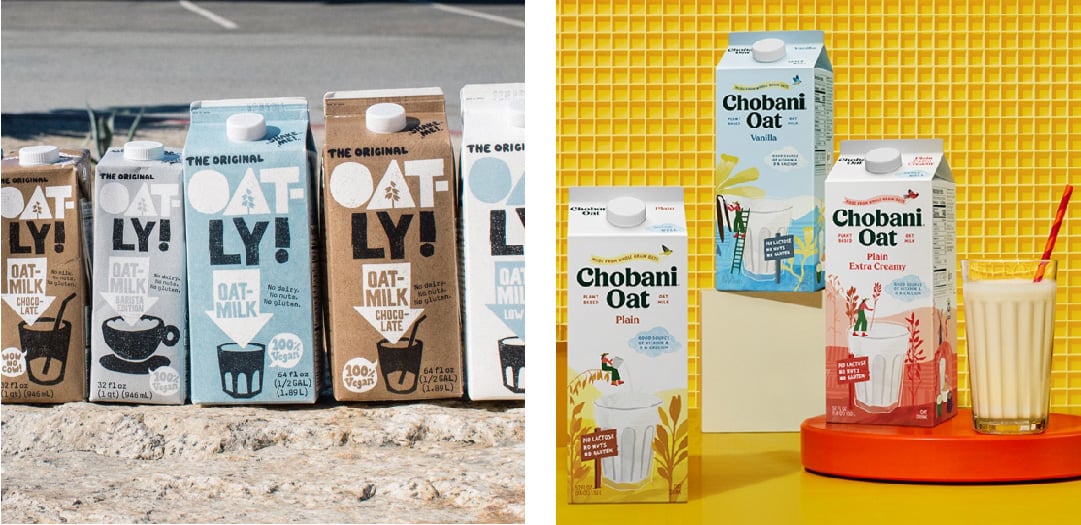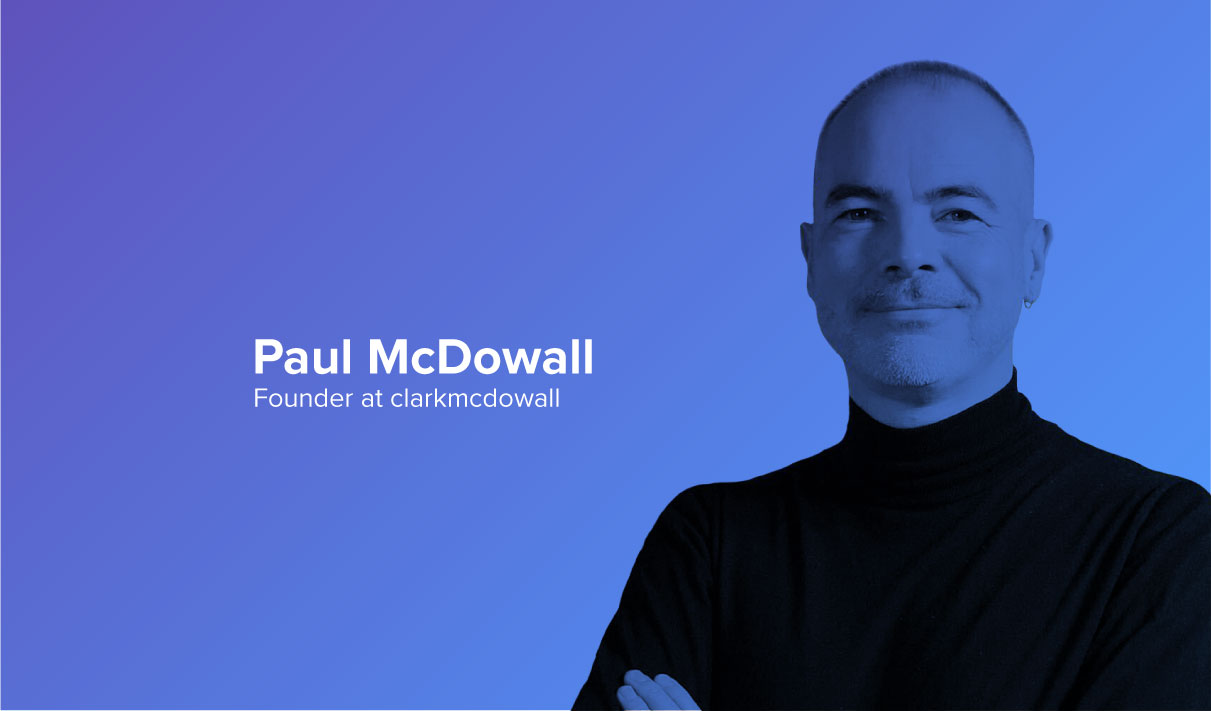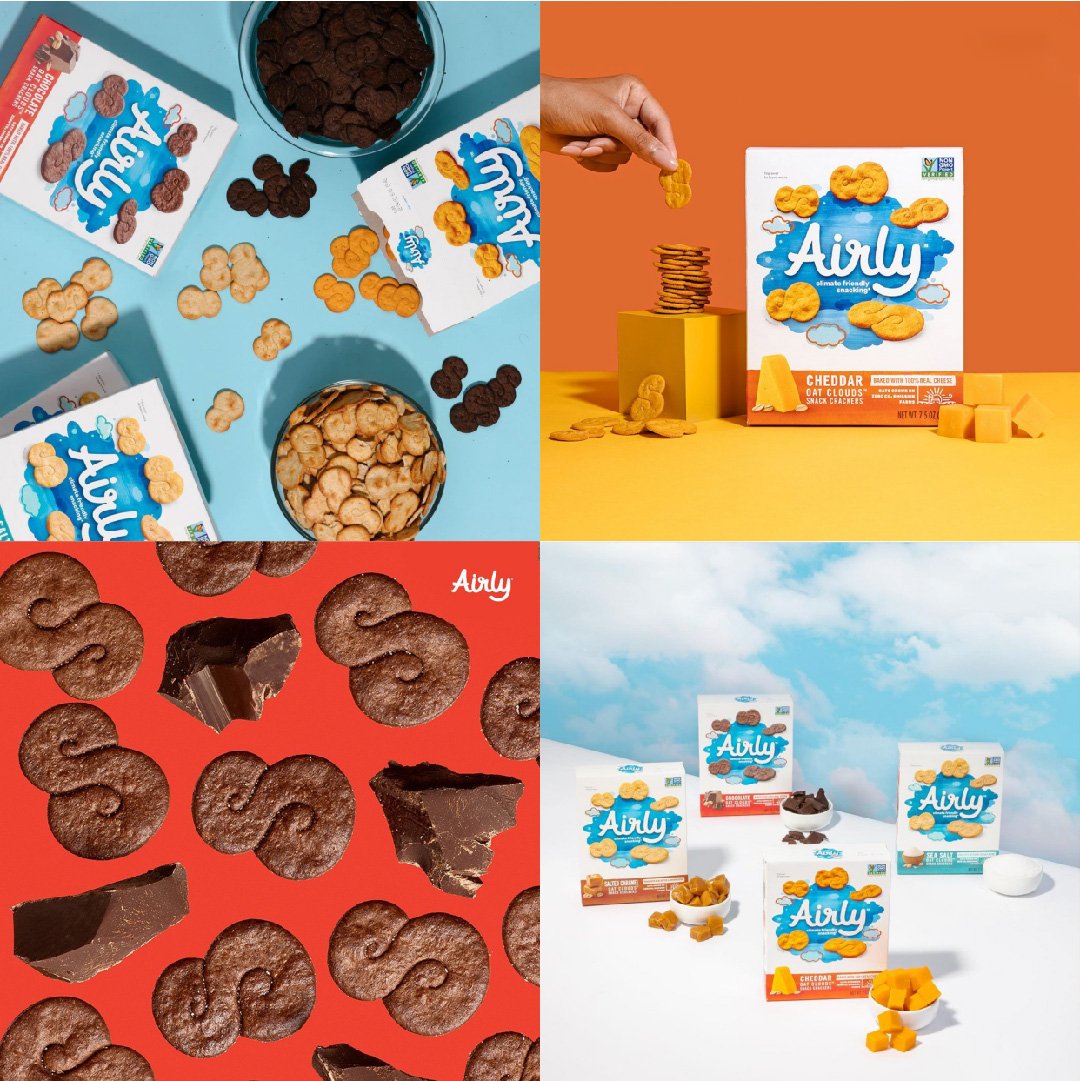Welcome to the latest installment of our Designalytics Spotlight series, where we connect with thought leaders who are helping to drive growth through design.
Today’s spotlight is on:
Paul McDowall
Founder of the independent NYC-based branding agency, clarkmcdowall.
Paul McDowall, for as long as he can remember, has been creative. Growing up in Liverpool, UK, it was a driving force for him. “I constantly had to make, draw, build, create, or I would get really antsy,” he once said.
After developing a successful career as a designer, he joined forces with his business partner Catherine Clark in 2001 to create the agency that bears their names. Paul’s insatiable need to create was still there, and Catherine offered something of a counterbalance to his creative side; she was the strategist and he was the designer. Their partnership—and the gestalt that came from the fusion of what he called “intelligence and imagination”—would be the bedrock of their new agency.
Twenty years later, the duo are still going strong in a branding landscape that has radically changed in that time. The industries in which they work are diverse—ranging from food and beverage behemoths like PepsiCo and Starbucks to Manhattan’s Lower East Side Girls Club–in part because the stories they tell are rooted in what every organization has in common: People.
It’s clear that Paul is an expert in the optimal expression of a brand’s voice and visuals. But he’s using that creative urge for something more now: During the course of our conversation, Paul used the word “human” or “humanity” 18 times. This is more than just a business he’s helped grow, it’s a mission to bring out the best in brands…. and beyond.
We talked about how “homework” can help build relationships with clients, about staying true to your brand’s character, and about the importance of idiosyncratic expression.
Success in design often requires some element of risk, while at the same time not pushing things beyond what’s acceptable for each brand. How do you balance that when you work with clients?
It starts with doing all of your homework. If we really do our homework on the brand and their target audience, understanding them and what makes them tick culturally and emotionally, we’re in a better place to take more risks. We have some skin in the game, then, and it feels more like you’re embarking on a journey with your client together.
No matter where you end up, there are usually a whole bunch of people that need to be convinced. But if you’re showing that you’ve done the work, it’s less like you’re pushing people up a hill, and more like you’re all walking up together.
Many of us have a fear of missing out, and brands are no different. When it comes to following (or not following) design trends, what advice do you have for brands?
We always tell brands to be true to themselves. If you’re just following trends because that’s what the “cool kids are doing,” it's not very interesting and it just becomes derivative. Nobody stands out.
If you understand who you are as a brand, though—what your purpose is, what your values are and, importantly, and what your character is, then choices like that become clearer. Your brand’s personality can shift and change where it makes sense, but your character is intrinsic.
You’ve said that one of the questions you try to answer is: “What human truth or tension is this brand trying to solve for?” Do you have an example of how you answered that for a client of yours?
I had an old client at Post who said he wanted to create an oat cracker using regenerative farming–essentially, use cutting-edge farming practices and carbon-credits to create a sustainable product. That’s right up our alley, so we were in right away.
Now, this is a cracker. If you add regenerative farming, the complexities of food production and carbon emissions… it’s a very complicated story to tell.
The tension there was: How do you tell the story of something that's really important and scientific and sustainable and also make it sound tasty?
We created this brand called Airly, which strikes that balance. The brand positioning is really approachable without being trite. We made the science easy to understand and digest (no pun intended)—”one box equals x-amount of beach balls worth of oxygen,” for example. The name connotes a lightness, and the cracker is shaped like a cloud. There was a whole ecosystem.
So the answer was creating a brand that people could understand was good for them, and reflected their values. With every little cracker, you’ve done something positive.
In creating the Airly brand, Paul said, “We’re not just selling crackers. We’re selling optimism. With every cracker, you’ve done something positive.”
Has there been anything in the last few years that was intriguing to you from a design perspective?
The world of digital and social has massively impacted design and branding. And that trickles all the way through to packaging as well.
Everyone has similar goals—brands all know they have to show up in social media, for example—and that leads to a sameness. It has forced a lot of brands into a very sort of similar space.
I use the word “idiosyncrasy” probably too much, but I think it encapsulates a way to break away from that sameness. One brand I admire is Oatly. They resisted trying to be modern and trendy, and they're just themselves. It’s distinct and quirky, it's got depth, and layers and nuance. Chobani did a similar thing with a redesign a few years ago as well.

Paul appreciates the distinctiveness, texture, and nuance of brands like Oatly (left) and Chobani (right).
Clarkmcdowall is described as a firm of “brand architects.” Why do you use that term?
For one, architects can’t succeed without rigor and science. But they also make these incredible, beautiful, creative leaps. They transform landscapes and spaces. Really successful architecture can help to shift behavior. It’s the embodiment of intelligence and imagination, and that’s what we aim for.
What’s one thing you would tell CPG brands?
Design around people… around their lives. Design for what the culture needs.





